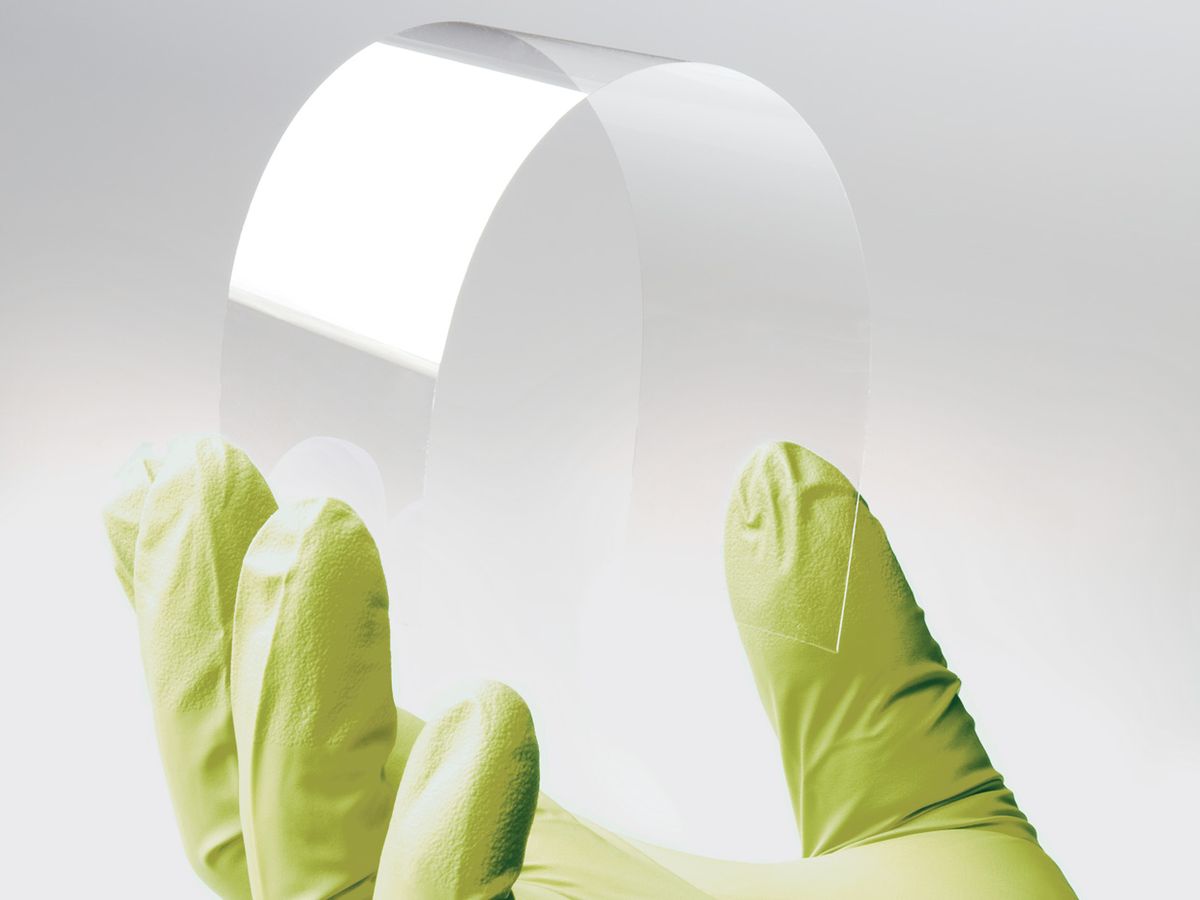The message from Display Week, June’s annual gathering of the Society for Information Display, is that while the current big trend in the industry—smart televisions—is driven by processors and software [see “Smart TV,” IEEE Spectrum, July 2012], the momentum for the next wave of display products is coming from advances in materials. These advances will mean bigger screens and higher resolutions at lower cost and could even open the door to radically new devices, such as an information display that wraps around a cylindrical pillar.
The materials in question are used in a critical component of flat-panel displays: the backplane responsible for turning pixels on and off. If you tear down a typical LCD, you’ll find that the actual pixel switching is done by thin-film transistors. Generally, these TFTs are formed on a thin layer of silicon deposited on a glass substrate, and these layers make up the backplane. The simplest and cheapest way to deposit the silicon layer produces amorphous silicon. However, the electrical properties of amorphous silicon translate to relatively large transistors and thus relatively large pixels—adequate for the LCD panels of yesteryear, but at the resolution of Apple’s Retina screens, for example, smaller transistors are needed.
One way to produce tiny transistors is to make the backplane using a single crystal of silicon, similar to the wafers that microprocessors are made from. However, it’s not feasible to make wafers large enough for displays. The current compromise solution is to use a laser annealing process that heats and cools a regular amorphous silicon layer. The result is a layer containing many small crystals, like frost on a car window. Much smaller transistors can be fabricated on this polycrystalline silicon, or polysilicon, than with amorphous silicon. The problem is that laser annealing works fine for the small- to medium-size displays used with cellphones and tablets, but not as well at the scale of TVs.
Fortunately, at Display Week 2012, in Boston, an entirely different approach was bearing fruit after about 30 years of research and development. Instead of silicon in the backplane, engineers are turning to a metal oxide composed of indium, gallium, and zinc in equal parts, giving the material its name: IGZO, for indium gallium zinc oxide. Its electrical properties are roughly between those of amorphous silicon and polysilicon, and IGZO is compatible with existing LCD manufacturing technology.
Sharp showed a 6.1‑inch LCD, suitable for mobile devices, with an IGZO backplane and an incredible 498-pixel-per-inch resolution (for comparison, a Retina display on an iPhone has 326 ppi). In addition to providing higher resolutions without an expensive polysilicon backplane, the metal oxide is more energy efficient than amorphous silicon.
Going beyond LCDs, IGZO has made it possible to create large backplanes that can provide the power required to drive organic light-emitting diode displays. OLEDs are challenging the dominance of LCDs, because each OLED pixel emits its own light, just as the pixels of old cathode ray tube TVs did (LCDs work by selectively filtering a backlight). Emitting rather than filtering light eliminates the narrow viewing angle problem of LCDs. OLEDs can also be more power efficient than LCDs, dispensing with the need for a continuously illuminated backlight, and can produce deeper blacks for better picture contrast.
OLEDs are already popular in small, high-end mobile device displays. The new metal oxide backplanes make it possible to create much larger panels, and LG has demonstrated 55-inch 1080p (1920- by 1080-pixel) OLED TVs that it intends to start selling by the end of this year. (Samsung also intends to ship a 55-inch OLED HDTV in 2012, although the company’s backplane reportedly uses polysilicon rather than IGZO.)
IGZO also allows for smaller OLED pixels than are possible with amorphous silicon backplanes. Sharp has produced a prototype 13.5‑inch panel in partnership with Semiconductor Energy Laboratory Co. with an amazing 3840- by 2160‑pixel resolution. This is the equivalent of four 1080p panels tiled together. The panel has 326 ppi, extremely fine for a screen this large (for comparison, the latest iPad display comes in at 264 ppi).
However, even bigger changes in displays could come from the material used as the foundation of backplanes: glass.
Last year, both Corning and Asahi Glass Co. demonstrated glass substrates that were just 0.1 millimeters thick. This year, Corning announced the commercial availability of its new glass under the brand name Willow. Asahi has also put its new glass on the market, including a version laminated to a thicker carrier sheet so that it can be used in existing LCD manufacturing lines.
These glasses are thin enough to roll up into spools, which makes it possible to use them in roll-to-roll production. Until now, LCDs and OLEDs have been fabricated on discrete rectangular sheets of glass that are processed in batches. Roll-to-roll production, even for just a handful of manufacturing steps, could be much faster and more efficient, driving production costs down. In addition to making finished products that cost—and weigh—much less, roll-to-roll production using thin glass could lead to novel applications such as very large displays, or screens that conform to curves in walls or other architectural features.
This article originally appeared in print as "Reformulating Displays."
About the Author
A senior member of the Society for Information Display, Alfred Poor also reported on displays in Spectrum’s July issue, where he covered the ongoing shift to smart TV. At PC Magazine, Poor was a contributing editor for more than 20 years and the publication’s first lead analyst for business displays.
Alfred Poor is a technology speaker and writer with a focus on health tech. He was the editor of “Health Tech Insider,” a website that covered wearable and mobile devices for health and medical applications. He also helps tech company executives make a better impression in video meetings and online presentations. A graduate of Harvard College, he is the author or co-author of 15 books and is widely quoted in major media outlets.




